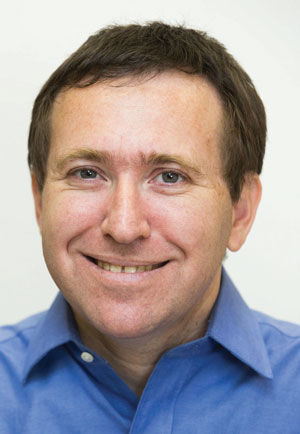As Zika story goes ‘viral,’ Israeli expert separates fact from fiction
Published February 18, 2016
Reports began to surface last week about the rise of cases of the mosquito-born Zika virus in South America, and the associated birth defect microcephaly, which is characterized by smaller brain size and has been detected in as many as 4,000 babies in Brazil. Zika was initially found in the United States in several cases where people were infected outside of the country. Most recently, the Centers for Disease Control and Prevention this week confirmed that one person has contracted Zika sexually in Texas.
The Aedes aegypti mosquito that transmits Zika is not endemic to Israel, and to date only one Zika infection has been detected in the Jewish State, in a child that had been on a trip to Colombia. But given that the World Health Organization (WHO) recently declared Zika as a world health emergency, the story has gone “viral” in the Israeli, American and international media.
JNS gained some insight on Zika from Israeli expert Dr. Hagai Levine, head of the environment and health track at the Hebrew University-Hadassah Medical Center School of Public Health. Levine is also an adjunct professor in preventive medicine at Mount Sinai Hospital in New York City, and from 2009-11 he headed the epidemiology section of the Israel Defense Forces Medical Corps.
Not all those who contract the Zika virus experience symptoms. But for those who do, how can they identify that they have this particular disease? Other than fever, what are the symptoms?
Most of the infections are asymptomatic. About 20 percent [of those infected] have symptoms such as maculopapular rash…muscular pain, and conjunctivitis (pinkeye). Very rarely, we’ve been seeing Guillain-Barre syndrome, a rare syndrome of muscle weakness that can also lead to paralysis.
The well-publicized cause-and-effect relationship between the Zika virus and the microcephaly condition, characterized by abnormally small heads in babies, is not conclusive. What would the medical community need to do to prove the connection?
I really think we need to be very careful at this point. People feel sure that there is a cause-and-effect and we are really not there yet. Our understanding [of Zika] can definitely change over time.
We have circumstantial evidence from the distribution of microcephaly and the dramatic increase of cases, from the changing distribution of the Aedes aegypti mosquitos transmitting the Zika virus, and from reported cases of Zika virus both clinically and in some cases also confirmed in a laboratory. But we don’t know for sure yet the cause of the dramatic increase in microcephaly cases, although it is likely caused by the Zika virus.
On the other hand, we must take action. The absence of evidence is not the evidence of absence. We cannot refute such an association, so we can do several epidemiological studies.
What might these studies entail?
We can measure [Zika] antibodies in groups that were infected and not infected, and see the association with microcephaly both for the babies and the mothers. In addition, we can strengthen surveillance systems both of the mosquitos and of the virus, and of human disease in order to improve our understanding. This is part of strengthening public health infrastructure in general. What this event shows is how important it is to invest in public health resources, human resources and laboratory resources beforehand so we can be prepared.
WHO declared Zika an international public health emergency, like it did last year with Ebola, arguably a much more dangerous disease. Zika has been spreading across South America for some time. Why do you think WHO made this decision on Zika now?
It will be very, very hard to eliminate or eradicate the Zika virus. In order to control vector-born diseases you need to control the vector. A vector [for Zika] is an insect that transmits a pathogen from the environment to the host. These days we see a change in the environment, presumably due to the El Niño phenomenon and more largely due to climate change, [which] has led to a change in the mosquito distribution. This, in parallel, has led to the Zika virus distribution, and now we have a huge problem globally. We don’t have any vaccine or drugs for the Zika virus.
How do public health officials plan to control the spread of Zika?
[Unlike with Ebola], the outcome of morbidity and mortality could be very low, but the magnitude of the problem is large. If you have a virus or a disease that is not so lethal, generally speaking it’s harder to get rid of it. If you have a pathogen that kills the host then usually the disease is less transmissible, and then you have higher chances of getting rid of the disease. With Ebola you need direct contact for transmission, so if you isolate all the cases of Ebola you can get rid of Ebola. But with vector-born diseases it’s much harder because you need to treat the source, the mosquitos. The solution is not only medical, but must be a collaboration between many disciplines, environment and health professionals.
The other issue is that we really need in our global response to think global and act local, to tailor our response to the local situation. We need to get rid of standing water, which is also helpful in the prevention of other vector-born diseases like Dengue or Yellow Fever. But regarding pesticides, we should be very careful because we can solve one problem of controlling the mosquitos by creating another problem of massive pesticide exposure, which will hurt both the ecology and humans. We need to keep it balanced and to check ourselves at every step.
















